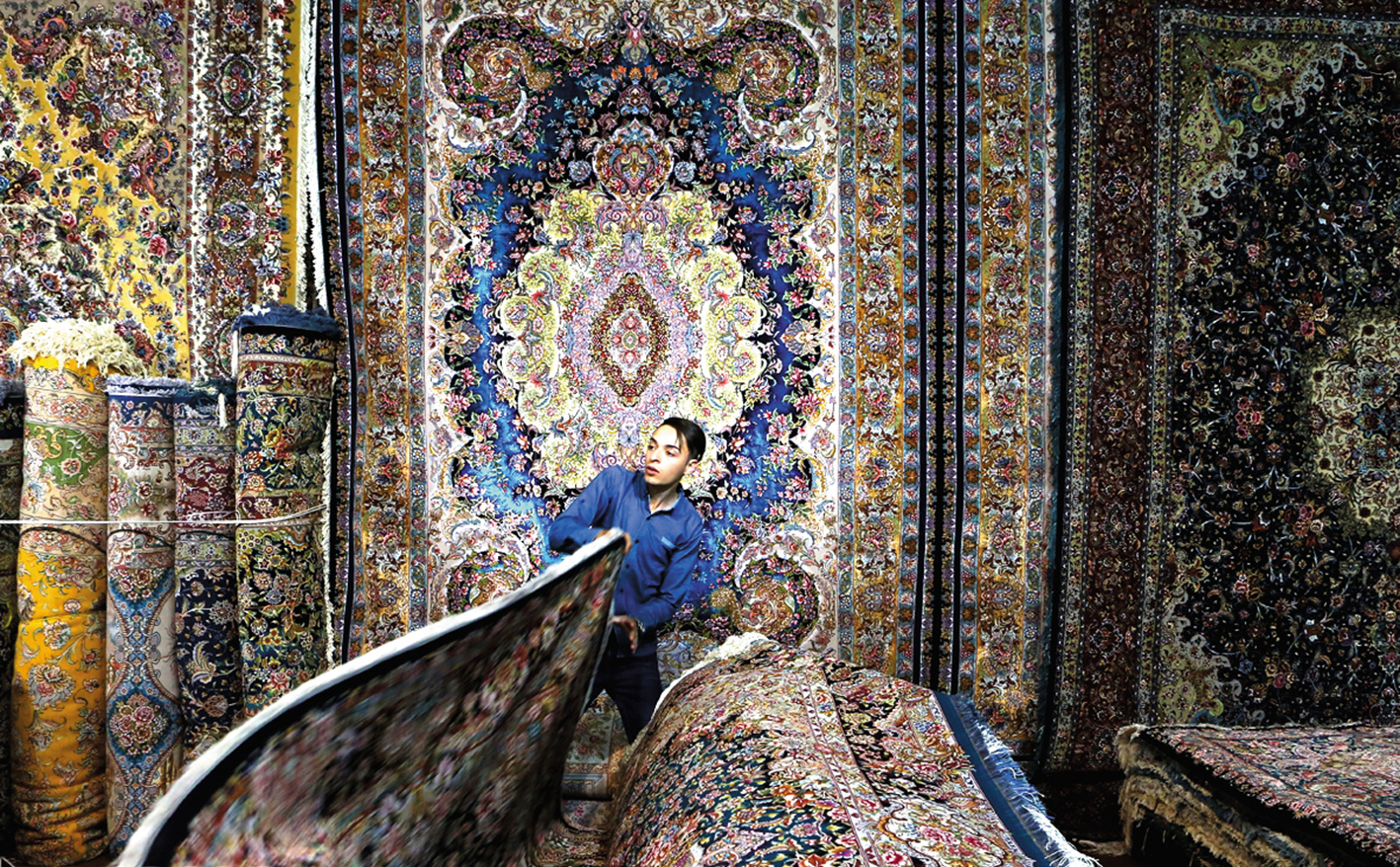The 25th Persian Handmade Carpet Grand Exhibition was held in Tehran as the economic landscape starts to improve for this Iranian craftsmanship in the global market after the lifting of sanctions in mid-January. Handmade rug exports were hit during the sanction years as Iran lost most of its markets in Europe and the US -- the main destination of the fine carpets.
With Iranians nowhere around, its long time rivals India, Pakistan, China, Afghanistan, Nepal grabbed the opportunity and secured a foothold in the global markets where the Persian rug was king.
Around $83 million worth of hand-woven carpet were exported from Iran during the first four months of the current Iranian year (March 20, June 20) registering a 39.5% increase compared to the corresponding period in 2015, according to head of Iran’s National Carpet Center. The US, traditionally the biggest customer of Iranian rugs, bought carpets worth $27 million during the period.
Old Hands Speak of Hindrances
Though prospects for a thriving business have re-emerged, producers and exporters who took part in this year’s exhibition unanimously echoed their shared concern about production and trade problems, which they said if not addressed soon, can create more harm.
“The rug market is an endangered species. Nowadays, customers in Iran and around the world look for commercial goods and reasonable prices whereas hand-woven carpets are commodities one needs to invest in. We need to promote the culture for handmade carpets,” Sadeq Mohammadi, head of the board of directors at Qashqai-Baf Production Co. producing nomadic rugs from pure wool and vegetable-based dyes told the Financial Tribune.
He said most of the exported carpets are not new and are therefore, cheaper. “This way, foreign customers get accustomed to lower prices than what Persian carpets are really worth. This simply does not benefit the business.”
Mohammadi said production costs including expenses for buying the raw materials and designs, washing and applying the final touches, weavers’ wages and advertisement are high in Iran, and that’s why Persian carpets are expensive and cannot successfully compete in international markets.
“The raw material for nomadic carpets is wholly provided by domestic producers. But for carpets weaved in urban areas 20% of the raw material including silk threads, are imported.”
Hamid Reza Zollanvari, head of Fars Province’s Hand-Woven Carpet Exporters Union says the government has recently agreed to give 2 trillion rials (about $52 million) in export incentives to export commodities including carpets. However, who gets what and the share of the handmade carpet industry from the meager amount is not known.
“One very pressing problem exporters face is the issue of exported carpets that have been returned and did not have buyers. The customs offices treat these items as imported items and levy taxes. A few weeks ago the government agreed to stop this practice but it has yet to make good on its promise. This has incurred extra losses on the businesses.”
Zollanvari who is a renowned producer and exporter of rugs believes that the art of carpet making is in dire need of meaningful support before it becomes history.
“Young people no longer enter the business as weavers or spinners because working conditions are not intriguing. The job is difficult, and most weavers do not have insurance to support them.”
Zollanvari said the government can do a lot to help raise the Persian carpet industry back to its heyday. “Helping producers and traders in advertising their products in the foreign media and shouldering part of the transportation costs are among the measures that can and should be taken.”
He says a major problem is the high interest bank interest rates that make it almost impossible to take out loans.
“Another problem is lack of a data bank to inform the producers about the market demands in terms of designs, colors, size, etc. The carpets in the market are actually what the producers want them to be rather than what customers demand. This causes problems in sales.”
The seasoned businessman and exporter says Iran’s spun wool and vegetable-based dyes are exported to rival countries such as India and Pakistan. “This has to either stop altogether or alternatively, tariffs must rise to 100%.”
Ahmad Reza Kiani a producer and exporter based in Shahr-e Kord in Chaharmahal-Bakhtiari Province believes production must be subsidized, destination markets must be studied and diplomats should take the initiate for Iranians to be able to hold carpet exhibitions overseas.
“The government is looking for new markets in Africa for example, but this will take time. For now we must focus on the markets that are open to us. We need to change our marketing and sales systems. All around the world, carpets are ordered based on the tastes of customers before they are woven. This guarantees sales. In our country it is the other way round and that’s why we face problems like the rugs that are retuned.”
Hope Factor
With the initiative of Iran Small Industries and Industrial Parks Organization and collaboration of Iran’s National Carpet Center, a project dubbed ‘Iran Carpet Clusters’ is being carried out in which 14 provinces including Kerman, Fars, Ilam, Kohgiluyeh and Boyer-Ahmad, Khorasan Razavi, North Khorasan, Chaharmahal-Bakhtiari, Ardebil, Kermanshah, Sistan and Baluchestan Qom, Lorestan, Zanjan and Golestan are involved.
“Most carpet producers are small units that can barely pay their overhead expenses, let alone spending on advertisements or design consulting which are very expensive. In this project these small units can join consortiums which will in turn work to the benefit of all members by creating collaboration networks all along the carpet value chain from providing the raw material, design, production, marketing, advertising and sales using shared expenses,” said Cluster Development Manager of Kerman Hand-Woven Carpet Business Cluster Mona Kananian in an interview with the Financial Tribune.
Each province has a project development manager, says Kananian, who surveys the conditions of production and work environment in that province and reports the shortcomings and problems to the consortium members composed of experienced producers and exporters in the field with proper knowledge of the market.
“The consortiums help in two ways. First by cooperating in advertising and marketing and finding new markets and ways of entering them and second, by acting as a link between producers and consumers by gathering information on the conditions and demands of the destination markets.”
So far, Iran Small Industries and Industrial Parks Organization, Iran’s National Carpet Center and Iran Chamber of Commerce, Industries, Mines and Agriculture have been effectively cooperating with the provincial consortiums.
“We are sanguine that the project will help organize the needed information, promote cooperation among business owners in the field, ease production conditions, augment the financial turnover in the industry and ultimately boost exports.”



